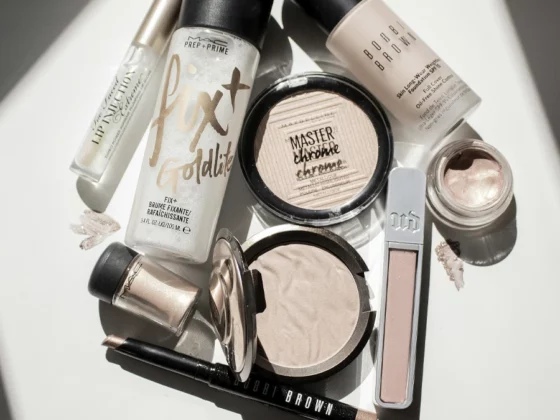Following word of mouth alone is not the best approach, cosmetics is increasingly moving towards targeted development so it is not certain that the same product has the same function in different cases. This is one of the reasons for reversing perspectives and starting with the ingredients. Here are some of them in the in-depth study signed by us at Studio Concept, an agency specialising in communication in the cosmetics sector.
Indice
How do I read the ingredients in cosmetics?
It is the ingredients that describe the properties of the product, starting from its basis is the way to make an informed choice. The first tool to know is the INCI – International Nomenclature of Cosmetic Ingredients – which uses an international convention to provide an unambiguous description of the composition. Here, ingredients are listed either by their English name or by their scientific name in Latin. The position in the list is particularly important: the order is defined by the percentage of the product in the composition of the cosmetic; however, the rule does not apply to ingredients below 1%. Although it may be complicated to know all the names present, at least the position of those of interest may be clarifying.
Which are the most used?
Whether a cosmetic is natural or synthetic, its general formula starts with the type of ingredients that make it up. This aspect is crucial in order to clearly distinguish cosmetic products from substances for medical use. Water may be one of the starting points, this being the solvent most present in the cosmetics recipe. Then there are the active ingredients, which may include vitamin substances, probiotics, coenzymes or hyaluronic acid, to name but a few.
Frequently recurring solvents may include vegetable oils, silicones but also alcohols. Surfactants are fundamental in cosmetics because they ensure that water interacts with the skin’s protective substances, they are useful for purifying but also for emulsifying and strengthening the product’s action. Then there are the base substances, gels or silicones for example, that guarantee the consistency of the cosmetic and the preservatives that support its stability.
Alpha-hydroxy acids (AHA)
The most common include lactic and glycolic acids. Their function is to exfoliate the more superficial skin, their removal action actively promoting the regeneration of a layer freer of common surface impurities. The effect is smooth skin.
Beta-i hydroxy acids (BHA)
Salicylic acid is one of the molecules most often represented; these are more active exfoliants against deeper imperfections in the skin. These are useful in removing blackheads: dissolving in an oily environment, their action is ideal in cleansing excess sebum.
Ceramides
They naturally belong to the uppermost layer of the skin, acting as a barrier against environmental pollutants. They are essential for maintaining proper hydration and supporting the skin’s elasticity.
Hyaluronic acid (HA)
Its structure could be thought of as a large sponge, it attaches itself to water molecules to absorb them. As a result, the molecule gains volume, building a real scaffolding that supports the skin and smoothes out classic wrinkles.
Contact us for more information on our services
Peptides
They are the building blocks of skin proteins; their use in cosmetics is strategic as they stimulate collagen production. Their elasticising action has a particularly toning effect.
Retinol
It is known to most simply as vitamin A, a fat-soluble molecule most often used as retinoic acid. Its effect is antioxidant and pigmentation correcting on the skin, so it is a powerful anti-ageing agent but also acts on the skin’s natural radiance.
Vitamin C
One of the most effective antioxidants, it is useful in rejuvenating and giving the skin more texture. The molecule prevents damage and actively protects the skin, its function is also to lighten hyperpigmentation and protect against oxidation.
What is the difference between excipient and active ingredient?
Although the two terms are a borrowing from the pharmaceutical field, cosmetics also make use of the two components. Knowing their meaning makes it possible to assess the weight of each ingredient according to its function. Where the active ingredient concerns the substances that fulfil the purpose of the cosmetic, the excipient includes the ingredients that serve to ensure its pharmaceutical form. In the case of an anti-ageing gel, the hyaluronic acid is the active ingredient that ensures hydration of the skin, thus smoothing out wrinkles; the gel substance is the simple excipient that ensures its effective application. Each product reflects its ingredients, understanding them is the basis for a conscious choice.
A specialised beauty agency that supports you in creating your own cosmetic line
If you are looking for a reliable partner to create, expand or update your cosmetic beauty and skin care line, you are in the right place. Our agency is highly specialised in the beauty sector and we are ready to offer you comprehensive and professional cooperation. We are able to collaborate with contract manufacturers of cosmetic products, offering our experience and expertise to create new lines with innovative concepts and identifying communication.
Among the cosmetic lines conceived by Studio Concept is, for example, Hemp Care, a beauty line centred on Organic Hemp Oil and developed in multiple declinations, for personal care, for the home, for perfumery, in a specific line for men and a line aimed at spas.
Name, product concept, packaging, visual, communication, web: Hemp Care is one of the many projects realised in Studio Concept that has involved the whole agency on multiple levels and with different skills.
Contact us for more information on our services.





